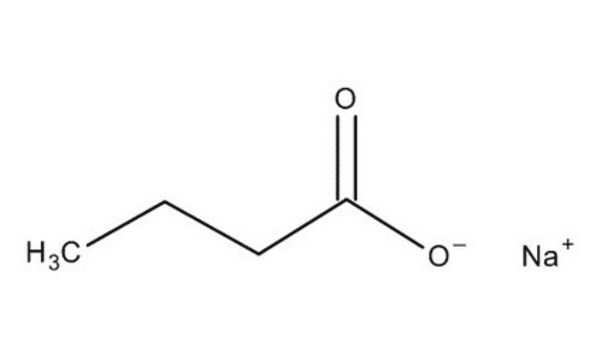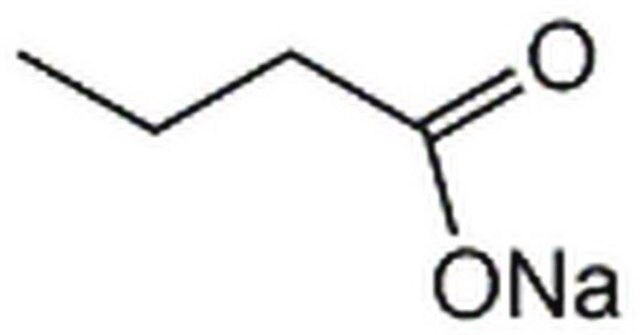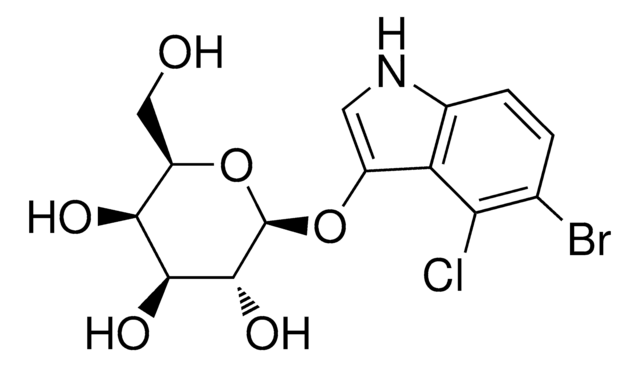19-137
Sodium Butyrate
For use as a histone deacetylase inhibitor.
Synonym(s):
Butyric acid sodium salt
About This Item
Recommended Products
Quality Level
form
liquid
manufacturer/tradename
Upstate®
technique(s)
activity assay: suitable (histone deacetylase (HDAC))
shipped in
wet ice
Application
- to inhibit histone deacetylase (HDAC) and study its effect on fibroblast growth factor 21 (FGF21) expression in liver
- to inhibit deacetylase activity in embryonic stem (ES) cells to determine if the enzymatic activity of the mSin3A-HDAC complex is essential for Nanog expression
- as a reagent during tissue homogenization
- as a supplement in chromatin immunoprecipitation (ChIP) dilution buffer
Biochem/physiol Actions
Physical form
Storage and Stability
Legal Information
Disclaimer
Signal Word
Warning
Hazard Statements
Precautionary Statements
Hazard Classifications
Eye Irrit. 2 - Skin Irrit. 2
Storage Class Code
12 - Non Combustible Liquids
WGK
WGK 1
Flash Point(F)
Not applicable
Flash Point(C)
Not applicable
Regulatory Listings
Regulatory Listings are mainly provided for chemical products. Only limited information can be provided here for non-chemical products. No entry means none of the components are listed. It is the user’s obligation to ensure the safe and legal use of the product.
JAN Code
19-137:
Certificates of Analysis (COA)
Search for Certificates of Analysis (COA) by entering the products Lot/Batch Number. Lot and Batch Numbers can be found on a product’s label following the words ‘Lot’ or ‘Batch’.
Already Own This Product?
Find documentation for the products that you have recently purchased in the Document Library.
Customers Also Viewed
Our team of scientists has experience in all areas of research including Life Science, Material Science, Chemical Synthesis, Chromatography, Analytical and many others.
Contact Technical Service










